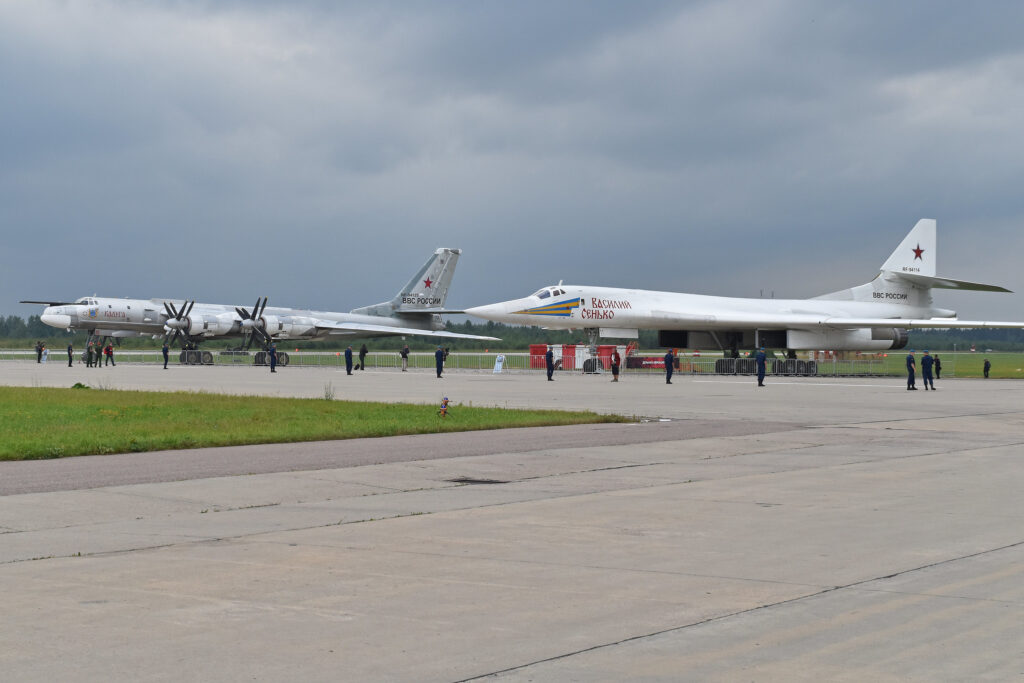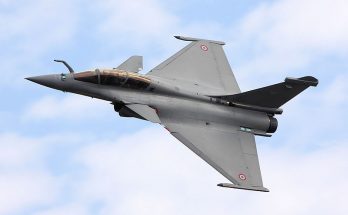
Ukraine’s intelligence services conducted an unprecedented attack over the weekend on the Russian Aerospace Forces, striking dozens of parked Russian strategic bombers with first-person view (FPV) drones launched from modified shipping containers stationed inside Russia itself. The attack, dubbed ‘Operation Spiderweb’, may have resulted in the destruction of dozens of aircraft, once again demonstrating how Ukraine has pioneered a new era of drone warfare.
Details of the mission emerged within hours, as Kyiv sought to capitalize on the moment. Ukrainian operators working under the Security Service of Ukraine (SBU) laid the foundation for the strikes over an 18 month period, smuggling drones into Russia and later situating them onboard the modified containers, which could be remotely activated at mission start. The containers were loaded onto trucks and steered by unsuspecting truck drivers towards the outskirts of several Russian airfields, where the drones were activated for the attack.
On Sunday, Ukraine launched the attack, hitting four airfields: Ivanovo Severny, Dyagilevo, Olenya, and Belaya. A fifth truck failed to deploy its payload outside the Ukrainka airbase in Russia’s Far East. As many as 117 FPV drones were deployed, and Ukrainian officials claimed that over 40 Russian strategic aircraft were damaged in the strikes. Ukraine destroyed Tu-95MS, Tu-22M3, and Tu-160 bombers in the attack, SBU chief Vasyl Malyuk stated, as well as an A-50 airborne early warning aircraft. That Ukraine struck Belaya in Siberia is a testament to the SBU’s reach.
The extent of damage can’t be confirmed, but satellite imagery of the Belaya airbase, published in wake of the attack, suggested substantial damage to four Tu-22M3 and three Tu-95MS bombers. Multiple videos emerged from Olenya airbase, where Russia reportedly had concentrated a sizable chunk of its strategic air fleet in recent days. A report published in late May 2025 highlighted the extent of concentration at Olenya, which was playing host to as many as 40 Tu-22M3s, 11 Tu-95MS bombers, and five An-12 transports. Plenty of these were still seen parked at the base in Ukrainian footage from the June 1 attack.
The drone strike revealed real intelligence failures on the part of Russia’s Federal Security Service (FSB). Exercising a bit of schadenfreude, Ukrainian President Volodymyr Zelensky claimed that a site used by the SBU operatives “was located directly next to FSB headquarters in one of their regions.” Zelensky added that all Ukrainian agents had already returned home prior to the operation, with none caught by Russian police.
In a lesson that will need to be learned around the world as drones become more ubiquitous, the defenses at Russia’s airbases failed to destroy the incoming Ukrainian attack, resulting in the loss of expensive aircraft that can’t be easily replaced. Russia’s military has been dealing with small drone threats for the better part of a decade, encountering aerial assaults on its Hmeymim airbase in Syria. After launching the invasion of Ukraine and pursuing its own air campaign hitting Ukrainian cities, Russia has had to contend with retaliatory long-range Ukrainian drones striking military bases and energy infrastructure, in some cases well away from the frontlines.
Russia’s military has gotten better at intercepting Ukrainian drone strikes over time, but the June 1 attacks were much different, having been launched in close proximity to the bases and utilizing small FPV drones that are much harder to detect than the bulkier longer-range models. There did not appear to be much protecting the bombers, as the Ukrainian drones in some cases took their time to hit the most vulnerable point on the Russian aircraft.
Footage from the attacks showed tires stacked on the wings of some of the aircraft. Russia began positioning tires on the wings of parked bomber aircraft in 2023, aiming to dupe artificial intelligence-driven systems into thinking the object wasn’t one of its targets. These protections, however, were plainly not enough to rely on – and perhaps wouldn’t fool Ukraine’s systems anyway.
While the extent of damage can’t be confirmed, the June 1 strikes are severely damaging for the readiness of Russia’s strategic air fleet. Just under 60 Tu-22s and a similar number of Tu-95s were in service with the Russian Air Force prior to the attacks. The Tu-95, together with around a dozen Tu-160s, serve as the aerial component of Russia’s nuclear triad. Around a dozen A-50 aircraft provide early warning and control. Since Russia invaded Ukraine, the fleet has remained mostly intact, only suffering some bruises prior to Operation Spiderweb, including the 2024 shoot-downs of A-50s and several Ukrainian operations targeting Tu-22s.
In wake of Operation Spiderweb, Russia will struggle to replace any destroyed airframes. Neither the Tu-95 nor Tu-22 is in production. Though Russia may have spare Tu-22s in storage that could be modified to serve in place of the lost aircraft, there is no such solution for the Tu-95s. Russia has resumed production of the Tu-160, but only in limited quantities, and aims to restore manufacturing lines for the A-50 as the successor A-100 program lags.
In the late 2000s and into the 2010s, Russia toyed with developing a brand-new platform to replace all three of its bombers, referred to as the PAK DA program. This initiative was thought to be put on the back burner by the end of the 2010s, as the Russian Ministry of Defense announced various modernization projects for the Tu-22, Tu-95, and Tu-160, but some work on PAK DA continues to date and prototypes are reportedly in construction. It has yet to make an appearance, much less a maiden flight, however, meaning that it will be a long while before any PAK DAs are ready for combat duty.
Ukraine’s Operation Spiderweb took place as Ukrainian and Russian negotiators are meeting in Istanbul for a new series of talks on the war. The strike is not likely by itself to be enough to push Moscow into serious dialogue – but Operation Spiderweb certainly reiterates the potential costs to Russia’s strategic military posture four years into the war.
Drawing lessons beyond the Russia-Ukraine war, the Ukrainian drone attack also reinforces the need for robust counter-drone systems, even at infrastructure considered relatively far from the battlefield and therefore ‘safe’. As military enthusiasts on social media were quick to point out, it wouldn’t be a particular leap for any other drone power to adopt a similar attack plan to Operation Spiderweb, storing small but effective FPV drones in containers to be shipped via truck or sea to their destinations and activated in the event of a contingency. The spate of mysterious drone sightings over bases, including in the U.S., serves as a reminder that the threat is already quite real.
Join Forecast International at the Paris Air Show to gain valuable insight into the evolving dynamics of the global defense market. Traditionally regarded as insulated from broader economic fluctuations, the defense sector is now increasingly impacted by global economic forces. Tariffs, trade disputes, and rising economic nationalism are introducing new complexities that affect the stability, cost-efficiency, and resilience of critical defense programs. Visit us at Hall 3, Booth C164 to learn how our expert analysis can strengthen your planning and elevate your strategy.
Schedule a time to meet with us in Paris.
Military markets analyst, covering Eurasia, Middle East, and Africa.





